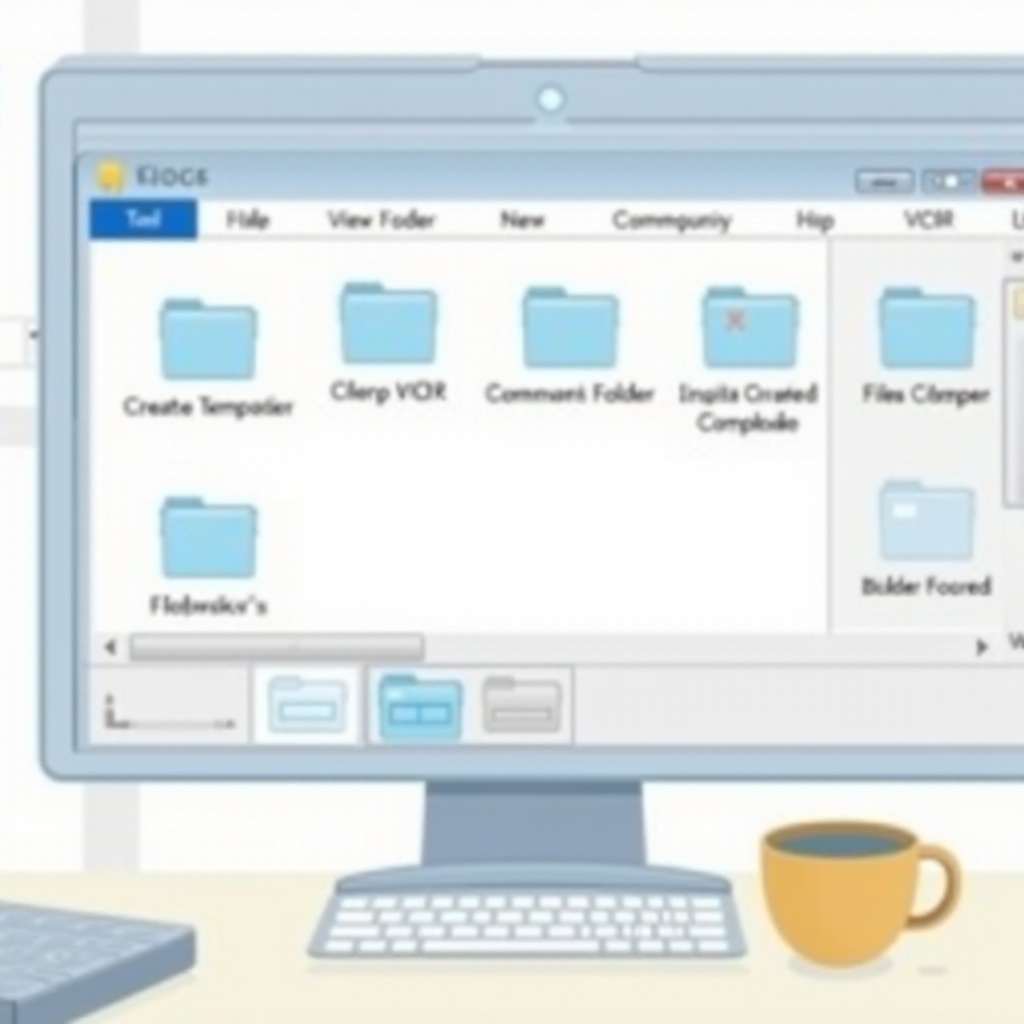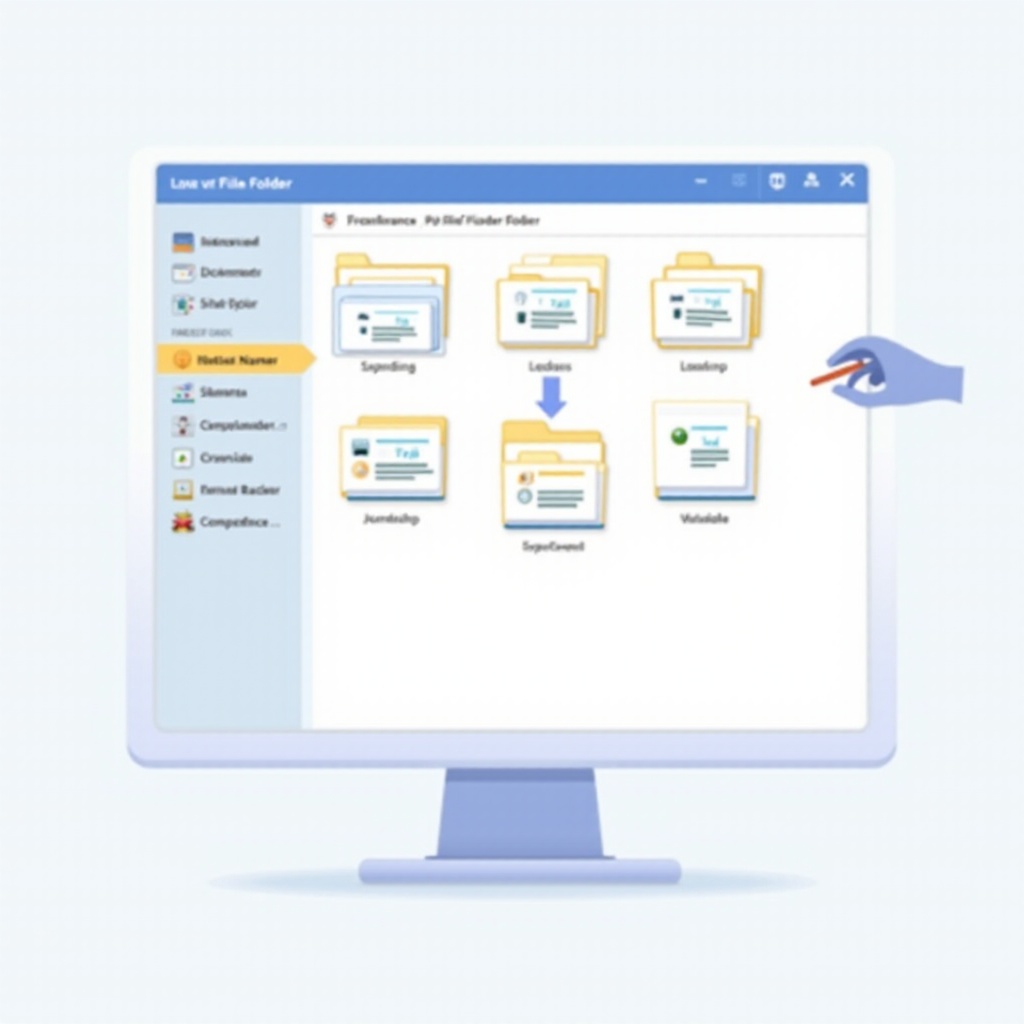Introduction
Creating multiple folders at once doesn’t have to be a daunting task when you know the right techniques. This skill is not only essential for IT professionals but also helpful for anyone looking to enhance their workflow – from photographers organizing shoots to students managing project files. In this comprehensive guide, we will explore efficient methods for rapidly creating multiple directories across different operating systems like Windows and macOS. Additionally, we will cover universal methods applicable on various platforms, alongside best practices to maintain a streamlined organizational structure using tools and scripting languages.

Benefits of Creating Multiple Folders Simultaneously
The ability to create multiple folders simultaneously can drastically enhance productivity by saving valuable time and allowing you to focus on more pressing tasks. Automating folder creation minimizes the risk of human error, ensuring uniformity and accuracy in your file organization. Particularly in environments that demand rigorous organization, such as offices and research institutions, tapping into methods suitable for your operating systems or universal scripting solutions results in optimized workflows and reduced frustration from repetitive tasks. Mastering this skill proves invaluable in both professional and personal projects.
Methods for Windows Users
Using the Command Prompt
The Command Prompt presents an effective way to swiftly create multiple folders on Windows:
- Open Command Prompt by searching ‘cmd’ in the search bar and pressing Enter.
- Use the ‘cd’ command to move to your desired directory.
- Input
mkdir folder1 folder2 folder3and hit Enter. This creates all specified folders in the directory.
Command Prompt is an accessible option for quick bulk folder creation.
Creating Batch Files
Batch files offer automation for routine tasks:
- Enter folder creation commands in Notepad, such as
mkdir folder1 folder2 folder3. - Save the text file with a
.batextension, likecreatefolders.bat. - Execute the batch file by double-clicking it, which prompts the creation of the folders as instructed.
Batch files excel in being reusable and adaptable for exhaustive folder operations.
PowerShell Scripting
PowerShell brings advanced directory structuring capabilities:
- Search for ‘powershell’ to open PowerShell.
- Navigate to the target directory using
Set-Location. - Execute the script
1..3 | ForEach-Object {New-Item -Name 'Folder$_' -ItemType 'Directory'}to create folders like ‘Folder1’, ‘Folder2’, and ‘Folder3’.
PowerShell scripting allows high levels of customization, fitting for intricate directory hierarchies.

Techniques for macOS Users
Utilizing Terminal Commands
The macOS Terminal offers efficient folder creation:
- Access Terminal via Applications > Utilities.
- Use
cdto navigate to your desired directory. - Execute
mkdir folder1 folder2 folder3to promptly set up folders.
Terminal offers robust folder management without the need for extra software installations.
Automator for Automated Folder Creation
Automator simplifies regular tasks through automation:
- Launch Automator, choose ‘New Document’, then select ‘Workflow’.
- Embed ‘Run Shell Script’ as an action and insert your folder creation command.
- Save and activate the workflow to instantly automate folder creation.
Automator provides a user-friendly interface for those who prefer to avoid command line operations.
Universal Methods Across Platforms
Python Scripting for Flexibility
Python offers a platform-independent scripting option:
“`python
import os
folders = [‘folder1’, ‘folder2’, ‘folder3’]
for folder in folders:
os.makedirs(folder, exist_ok=True)
“`
Deploy this script in any Python environment to create folders in your specified location. The universality and flexibility of Python make it a top choice for cross-platform solutions.
JavaScript Options
Node.js provides another universal solution:
- Download and set up Node.js from the official site.
- Write a
createFolders.jsscript:
“`javascript
const fs = require(‘fs’);
const folders = [‘folder1’, ‘folder2’, ‘folder3’];
folders.forEach(folder => {
if (!fs.existsSync(folder)) {
fs.mkdirSync(folder);
}
});
“`
- Run the script using
node createFolders.jsto produce folders.
JavaScript’s widespread adoption makes it fitting for developers across various contexts.
Best Practices for Folder Organization and Naming Conventions
An organized folder structure clears chaos and boosts efficiency. Adopt clear and descriptive names that maintain a consistent format, like YY_MM_DD_Event for chronological order. Refrain from using special characters, emphasizing compatibility across platforms. Arrange related directories into overarching parent folders to streamline navigation. Regular assessments and reorganizations can maintain relevance with ongoing workflow or project shifts. Implementing these strategies aids in facilitating efficient collaboration, file retrieval, and data handling.

Conclusion
Creating multiple folders at once has become an accessible option for users of all expertise levels. The outlined methodologies, from basic Command Prompt on Windows to versatile Python scripting, offer intuitive solutions catering to diverse needs. By adopting structured folder organization, you prepare a tidy digital workspace that simplifies browsing and enhances overall manageability.
Frequently Asked Questions
How can I undo multiple folder creation if I make a mistake?
Delete the folders by navigating to the directory and using `rmdir` (Windows) or `rm -r` (macOS) followed by folder names, or delete them through your file explorer.
Are there safety concerns with using scripts to create folders?
Always review and test scripts before execution. Ensure they originate from reputable sources to avoid unintended system changes.
Can I create folders based on a list of names from a text file?
Yes, read the file line by line in your script and create folders accordingly. Modify Python or JavaScript examples to include file reading commands.

